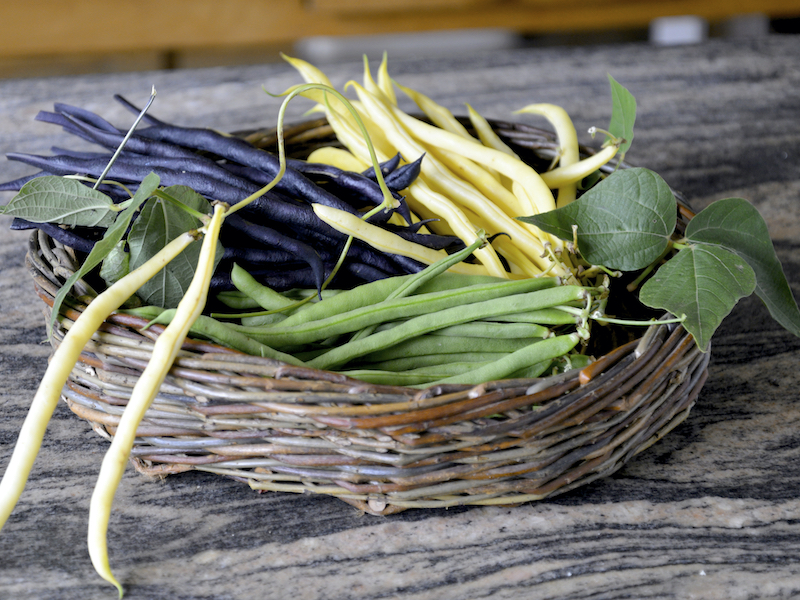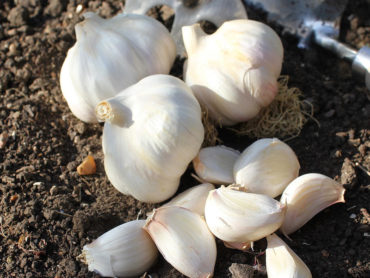You don’t need a big garden to grow your own beans and there’s a load of excellent online advice to help you including video tutorials, expert articles and Instagram posts produced by some of the most knowledgeable growers in the UK. Take a scroll through these top tips to grow your best ever crop of bean plants – whether you prefer runner beans, broad beans, French beans or even something a bit more unusual, like edamame.
This article was reviewed by the Suttons horticultural team and updated on 30 April 2024.
Contents
- Best advice on runner beans
- Best advice on broad beans
- Best advice on French beans
- Best advice on edamame beans
- Best advice on planting out beans
Best advice on runner beans

Image: Runner Bean Seeds from Suttons
Prolific and tasty runner beans are a great choice for the novice gardener, as Carol at The Sunday Gardener explains in her excellent article How to Grow Runner Beans. Their large seeds are easy to handle and they germinate quickly – usually within a week. Because runner beans have long root systems, she sows her seeds in cardboard toilet roll tubes that decompose when she plants them out.
If you have plenty of space and a light soil, preparing a bean trench will help keep your thirsty runner bean plants well hydrated in the growing season, according to John at Allotment and Garden. In his very thorough article on growing runner beans he says you should dig your trench in winter, line it with cardboard or newspaper and fill it with vegetable peelings and soil.
If you want an early runner bean harvest, Steve at Steve’s Seaside Life suggests sowing seeds in April and choosing one of three methods to keep them warm and well protected, all of which are demonstrated in his easy to follow runner bean growing video. His three methods for early beans are: growing in containers in the polytunnel; growing in bubble wrap tents outdoors; or growing in low polythene tunnels out at the allotment. Watch his full video for a thorough guide.
When it comes time to clear your runner bean plants in autumn, simply cut them down and “leave the roots in the ground,” says Sally at @the_organic_plot. She explains that runners are perennial plants and, with a good mulch, they “may reappear next spring with strong growth and multiple stems.” Some of Sally’s plants are 3 years old and still productive!
Best advice on broad beans
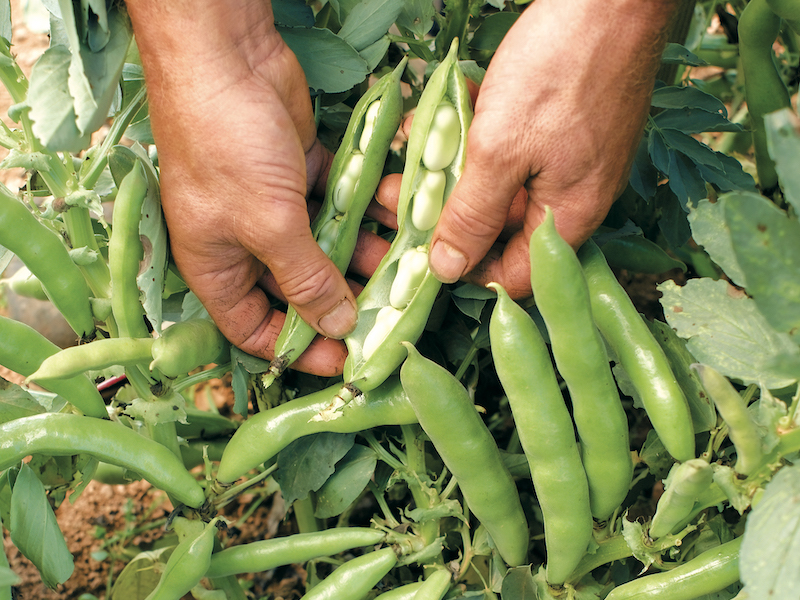
Image: Broad Bean Seeds from Suttons
Versatile and hardy, broad bean seeds can be sown at almost any time of year, depending on the variety. In his detailed video on growing broad beans, Charles Dowding, the No Dig Gardener, talks through all your choices, whether you sow your broad beans in autumn, winter or spring, for harvests from late May to early July. He advocates pinching out the plant tips when the plants are in full flower to deter aphid pests.
Over at the Veggie Plot, Chris shares his video showing how to sow ‘De Monica’ broad bean seeds straight into the ground in late autumn, having weeded and raked over the allotment bed. Showing off his summer broad bean harvest, Chris explains that he leaves the broad bean roots in the soil when he clears the bed for the next crop because they possess beneficial nitrogen-fixing nodules that will rot down naturally.
Over at @devonandearth, Rhiannon is pleased to have nailed successional sowing her broad beans. At the far end of her raised bed are the autumn-sown plants that she overwintered in the greenhouse. In the middle she has broad bean seeds that were direct sown in late winter. And finally, her spring sown seedlings are also going in. Rhiannon’s succession sowing will undoubtedly extend her harvest. However she’s also thinking about pests. “Autumn sown broad beans tend to be less prone to aphid infestations so it will be good to see how each set fairs with the aphids,” she says.
Up in Leeds, Kuki and Fedu have changed the way they grow broad beans after years of trial and error. In the past, they say, they “used to start broad beans religiously in the greenhouse, by sowing them in module trays and then transplant them.” Now they “sow broad beans directly into the ground in late winter, usually mid-February,” which saves time and is a super-efficient way to get strong, healthy, well-acclimatised plants. Follow them on Insta for lots more practical tips.
Best advice on French beans
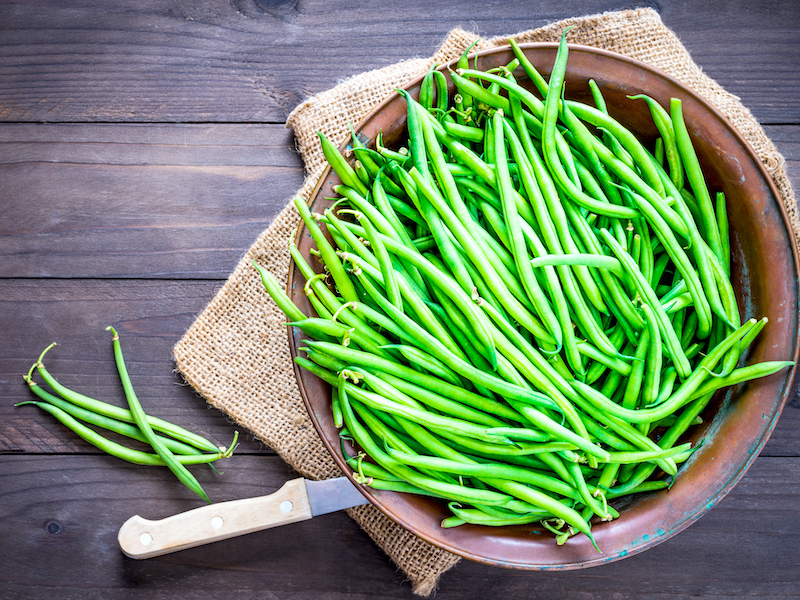
Image: French Bean Seeds from Suttons
Over at @plot26a, Anjee grows dwarf and climbing French beans. Her dwarf variety is being sown at the end of March, as she’s planning to grow the plants in the polytunnel. But she waits until late April/early May to sow her climbing French bean seeds, as they don’t get planted out until late May/early June when there’s no risk of frost. Anjee recommends sprinkling the compost with chilli powder after sowing the seeds, to deter mice. “I would recommend not getting too close cause it really blinking stings when you get it in your eyes,” she adds!
If you like to sow your French beans into toilet roll tubes, Steph from @stephs_allotment, says the trick to preventing them from getting mouldy is to give them lots of space. She does this by sitting each tube in an individual plastic pot before grouping them into large trays. “And make sure you open your greenhouse door/vents even on cooler days,” she adds. Take a look at her Instagram photos to see how she organises enough French beans to feed an army!
Best advice on edamame beans
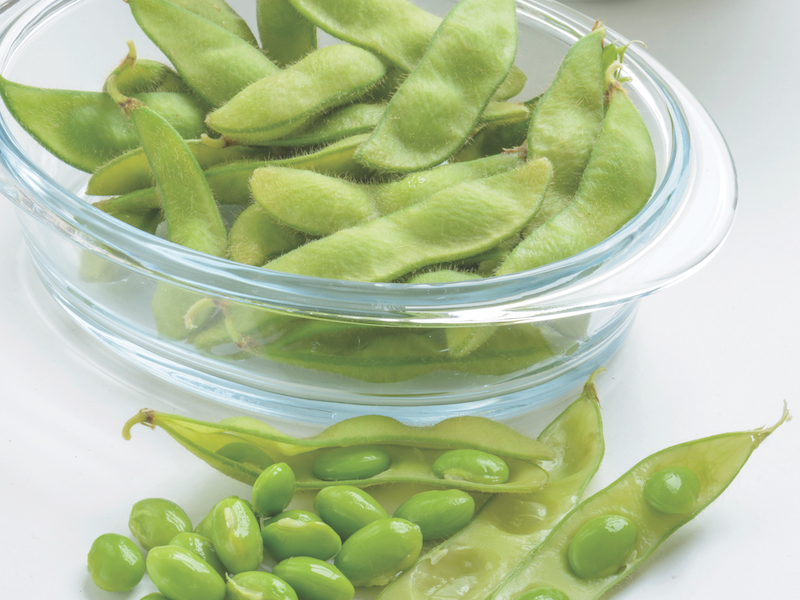
Image: Edamame bean seeds from Suttons
Grown and eaten in China for more than 2000 years, edamame beans are a highly nutritious source of plant-based protein. The team at Suttons explains that “an edamame bean is an immature soybean, picked, cooked and eaten when the beans are still fresh and green.” But they don’t recommend sowing soybean seeds to eat this way. Instead, they advise you to choose “specifically labelled edamame seeds, as they are intended for picking early, producing larger sized beans with a sweeter flavour when immature.” Read the full article for sowing and growing tips.
Gaining in popularity, exotic edamame (or soya) beans come highly recommended by Sally at The Organic Plot. She says recently developed early ripening varieties of this legume are reliably easy to grow in the UK climate. She picks young edamame pods and boils them for their yield of delicious bright green beans to use in salads.
Best advice on planting out beans
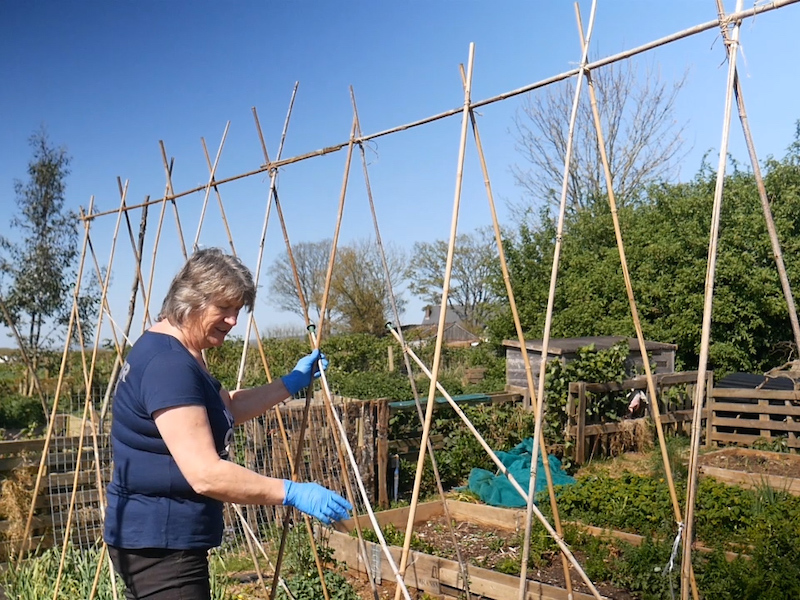
Image: Byther Farm
Over at Life on Pig Row, Andrew likes to use his imagination when it comes to growing beans. In his entertaining blog post he talks through planting out runner and French beans, pointing out their versatility in any space. Why not try growing them as a trailing plant from an upstairs window box for a cascade of beans down a wall? He also stresses the need to give the bean roots a good soaking when you plant them out.
Don’t be tempted to plant out your beans until the risk of frost is over, warns Elaine of The 3 Growbags in her chatty beginners guide. The shock of lower temperatures could kill them. She explains how to harden off your young bean plants by putting them outside for a short time each day and bringing them in each night until they’ve acclimatised. Support them with twiggy sticks and watch out for slugs!
Climbing beans need something to cling to as they grow and everyone has their own preferred support method, whether that’s a few sticks in a container or a sophisticated structure. For a really thorough guide to some of the choices available check out the terrific bean support guide from Liz Zorab at Byther Farm. She demonstrates how to create a bamboo cane wigwam, an A frame of canes, an inverted bean support and a rather fancy wooden pergola bean support.
In his informative video on planting out beans, including his record attempt at growing the world’s longest bean, Tony at Simplify Gardening runs through three different ways to build inexpensive support frames, using canes and old scaffolding poles, for your climbing beans. His V-shaped structure, for example, makes his bean harvest very accessible.
If you prefer a more naturally attractive look, Carol at The Sunday Gardener suggests you support bean plants on small saplings, branches or twigs rather than bamboo canes.
We hope these tips help you grow a beautiful crop of tasty beans, whether you have a tiny patio or a generous allotment plot. Sow beans from seed or buy bean plants if you want a head start, but do give them a go if you haven’t tried growing your own beans before.
Lead image: Bean (Climbing French) Plants – Colourful Climbing Mix
See expert contributors here
- Carol Bartlett, Gardening blogger and content creator.
- John Harrison, Allotment blogger, winner of Grow Your Own’s ‘Great British Growing Awards’ 2015, author and garden writer.
- Steve Richards, Gardening content creator, author, year round self-sufficient gardener, YouTuber.
- Sally Morgan, Organic gardener, botanist, speaker, author of ‘The Climate Change Garden’, editor of Organic Farming Magazine
- Charles Dowding, No-dig gardening pioneer, horticulturalist, author.
- Chris Halls, Gardening content creator and YouTuber./li>
- Rhiannon Alcock @devonandearth, allotmenteer, founder of Exeter-based community growing project ‘Devon Dig and Donate CIC’.
- Suttons Horticultural Team.
- Kuki and Fedu @a_little_garden, edible gardeners, content creators.
- Anjee @plot26a, Senior editor of The Garden Folk Magazine, gardening enthusiast.
- Steph Young @stephs_allotment, Gardening influencer and content creator, gardening writer.
- Andrew Oldham, gardening blogger, columnist winner of GMG’s Gardening Columnist of the Year 2022.
- The 3 Grow Bags, Gardening bloggers, YouTubers and authors.
- Tony O’Neill, Gardening content creator, author, YouTuber. Winner of Ezoic Publisher of the Year award 2021.
Last Updated on February 11, 2025 by Suttons Horticultural Team

